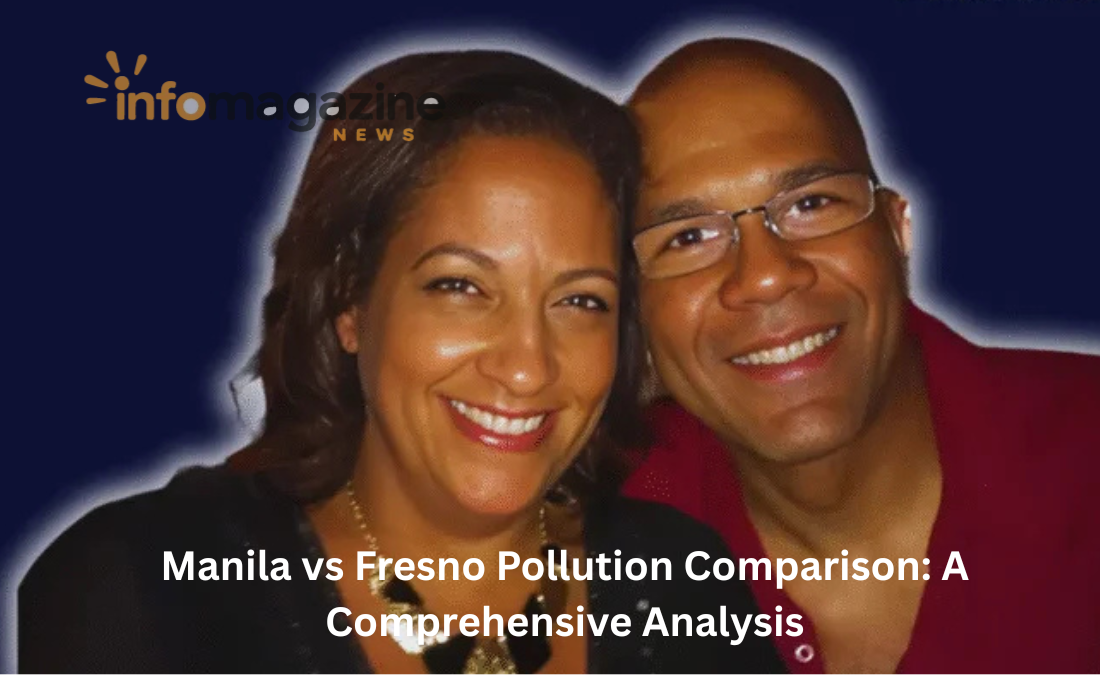Introduction: Understanding the Manila vs Fresno Pollution Comparison
Manila vs Fresno Pollution Comparison Air pollution has become one of the most pressing global environmental issues, affecting millions of people in urban areas. As cities expand and industrialize, pollution levels tend to rise. This article provides a detailed Manila vs Fresno pollution comparison, highlighting the differences and similarities between these two cities in terms of air quality, sources of pollution, environmental regulations, and public health impacts. Understanding these factors is essential for crafting policies and improving the quality of life in both urban centers.
Geography and Climate: How Location Affects Pollution
Manila’s Geography and Climate
Manila, the capital city of the Philippines, is located on the eastern shore of Manila Bay. It is part of Metro Manila, one of the most densely populated regions in the world. The city experiences a tropical monsoon climate with two main seasons: dry and rainy. High humidity, warm temperatures, and limited wind circulation during certain months can trap pollutants near the ground, worsening air quality.
Fresno’s Geography and Climate
Fresno, located in California’s San Joaquin Valley, lies within a semi-arid climate zone. Its valley geography causes air stagnation, particularly during summer and winter. This often leads to the buildup of pollutants such as ozone and particulate matter (PM). Temperature inversions are common, trapping emissions from vehicles and agriculture close to the ground.
Comparison Insight: While both cities suffer from pollution exacerbated by climate, Fresno’s valley geography and temperature inversions make it particularly prone to prolonged pollution episodes, while Manila’s pollution is often intensified by tropical weather patterns and urban congestion.
Air Quality Index (AQI): Quantitative Manila vs Fresno Pollution Comparison
AQI in Manila
According to data from IQAir and local government monitoring, Manila often records AQI levels between 100 and 160, especially during dry seasons. These levels fall into the “Unhealthy for Sensitive Groups” category. PM2.5 concentrations—tiny particles harmful to human health—are usually the main contributors to high AQI readings.
AQI in Fresno
Fresno, as part of the Central Valley, is infamous for poor air quality. According to the American Lung Association, Fresno often ranks among the top U.S. cities with the worst short-term and annual particle pollution. AQI levels can range from 90 to over 200, particularly during wildfire seasons and winter smog periods.
Comparison Insight: Both cities experience AQI levels that can threaten public health. However, Fresno’s AQI often reaches more dangerous levels than Manila’s, especially due to seasonal wildfires and agricultural practices.
Primary Sources of Pollution: Manila vs Fresno Pollution Comparison by Emissions
Pollution Sources in Manila
- Transportation: The largest contributor. Jeepneys, buses, motorcycles, and old diesel vehicles emit large amounts of nitrogen oxides and PM.
- Industrial Activity: Factories and power plants burn coal and fossil fuels.
- Waste Burning: Common in urban slums due to inadequate waste management.
- Construction Dust: With rapid urbanization, dust from construction sites adds to PM levels.
Pollution Sources in Fresno
- Agriculture: A significant contributor. Pesticide use, dust from plowing, and emissions from farm equipment.
- Vehicle Emissions: Though California has strict regulations, Fresno still has high traffic-related pollution.
- Wildfires: Seasonal wildfires in California lead to sharp spikes in PM2.5 and AQI levels.
- Residential Wood Burning: A source of pollution during winter months.
Comparison Insight: Manila’s pollution is mostly urban and traffic-related, while Fresno’s comes from a combination of agriculture, wildfires, and transportation. Both face unique challenges, but Fresno’s pollution is influenced more heavily by natural disasters.

Health Impact: A Public Health Perspective on the Manila vs Fresno Pollution Comparison
Health Effects in Manila
- Respiratory Issues: High asthma rates, especially among children.
- Cardiovascular Diseases: Prolonged exposure to PM2.5 can increase risks.
- Reduced Life Expectancy: Studies suggest a measurable decrease in lifespan in polluted areas of Manila.
Health Effects in Fresno
- Asthma Prevalence: One of the highest asthma hospitalization rates in the U.S.
- Cancer Risk: Long-term exposure to polluted air raises cancer risks.
- Infant Health: Increased premature births and low birth weight have been linked to air pollution.
Comparison Insight: Both cities experience severe health outcomes from pollution. Fresno’s clean-air policies have mitigated some issues, but wildfires and valley geography continue to pose threats. In Manila, limited healthcare access in poorer districts exacerbates the health burden.
Government Regulations and Mitigation Measures
Manila’s Regulatory Efforts
- Clean Air Act of 1999: Set national standards, but enforcement remains weak.
- Vehicle Emission Testing: Mandated, but often poorly implemented.
- Green Spaces Initiatives: Ongoing but limited in urban areas.
- Public Transport Modernization: Jeepney modernization programs aim to reduce diesel emissions.
Fresno’s Regulatory Efforts
- California Air Resources Board (CARB): Enforces strict vehicle and industrial emissions standards.
- Burn Bans: Prohibit residential wood burning on high-pollution days.
- Clean Agriculture Programs: Encourage sustainable farming practices.
- Wildfire Management: Includes controlled burns and public warning systems.
Comparison Insight: Fresno benefits from stringent state and federal policies, making enforcement more effective. Manila, while having policies on paper, faces challenges in implementation due to resource limitations and urban congestion.
Environmental Activism and Public Awareness
Manila
- Public Awareness Campaigns: NGOs and youth groups often lead clean air initiatives.
- Community Monitoring: Some districts have set up their own air quality monitoring.
- Challenges: Political will and corruption often hinder long-term initiatives.
Fresno
- Community Activism: Strong advocacy groups like the Central Valley Air Quality Coalition.
- School-Based Programs: Educate children and families about asthma and air safety.
- Technology Use: Use of apps and websites for real-time AQI monitoring is widespread.
Comparison Insight: While both cities have active communities, Fresno’s access to technology and public health funding gives it an edge in public engagement and awareness.
Technological and Infrastructural Solutions
Manila
- Smart Air Monitoring: Limited but growing use of sensors in key locations.
- Electric Vehicles (EVs): Adoption is slow but increasing with government support.
- Green Building Codes: Not yet widely adopted.
Fresno
- Air Monitoring Network: One of the most advanced in the U.S.
- EV Infrastructure: Rapidly expanding EV charging networks.
- Sustainable Urban Planning: Emphasis on reducing sprawl and promoting clean transit.
Comparison Insight: Fresno is ahead in technological adaptation and green infrastructure. Manila’s growth is constrained by economic and infrastructural limitations.
Conclusion: Key Takeaways from the Manila vs Fresno Pollution Comparison
In conclusion, the Manila vs Fresno pollution comparison reveals two cities battling serious air quality issues, though the sources, regulatory strength, and socio-economic context differ. Manila struggles primarily with urban vehicle emissions, limited enforcement, and infrastructure challenges. Fresno, despite robust regulatory frameworks, grapples with natural pollution sources like wildfires and its unique geography.
Key Takeaways:
- Air Quality: Fresno often experiences worse AQI levels than Manila, especially during fire season.
- Sources: Manila’s pollution is urban-centric; Fresno’s is agriculturally and naturally driven.
- Health Effects: Both cities suffer, though access to healthcare and public support varies.
- Solutions: Fresno’s policy enforcement and public awareness programs are more advanced.
Final Thought: For both Manila and Fresno, tackling pollution requires a multi-pronged approach—combining regulation, public awareness, technological innovation, and international cooperation. Only through consistent effort can these cities hope to provide cleaner, healthier environments for their citizens.




